How to Fix NET ERR_CERT_AUTHORITY_INVALID Error in Chrome?
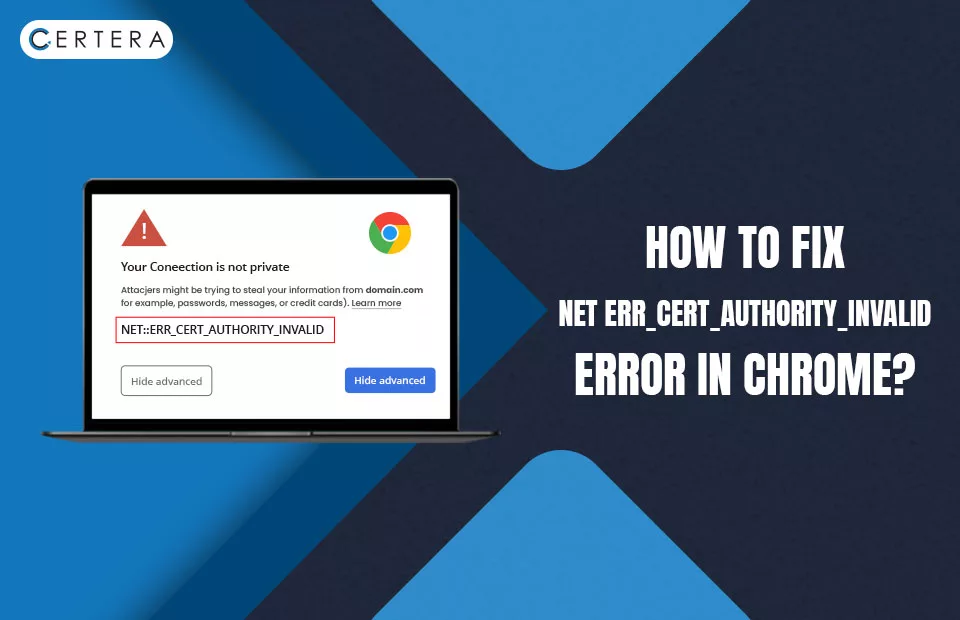
Here are a few possible causes for the digital certificate challenges you are experiencing.
A disreputable certificate authority may have issued your SSL certificate. You are encountering the issue because of this.
When your certificate is out-of-date or self-signed, this SSL problem also happens.
Installing an SSL certificate is a need if you want to secure your website’s data and offer security to visitors. But that does not imply that you can purchase any certificate in the market.
Choose a certificate from a trustworthy authority recognized by browsers for an excellent user experience and uninterrupted security for your visitors and their confidence.
Here are some guidelines you can follow to assist you in fixing the Error on Google Chrome.
Before going to explore the fixing methods of NET::ERR_CERT_AUTHORITY_INVALID error message let’s understand what NET::ERR_CERT_AUTHORITY_INVALID error is.
What Is NET::ERR_CERT_AUTHORITY_INVALID Error?
The error, as its name indicates, occurs when your browser fails to validate the authenticity of the SSL certificate that secures your website. You shouldn’t get this issue unless you haven’t installed a certificate or are utilizing HTTP, which isn’t recommended for your website.
NET::ERR_CERT_AUTHORITY_INVALID error warning appears when a browser cannot verify an SSL certificate for a particular website.
This invalid code could show up due to several SSL-related issues.
SSL Certificate that is Self-signed:
Although it can be less expensive, a self-signed certificate needs more credibility.
Outdated SSL Certificates:
An SSL certificate can come with a flexible expiration date. Some are perpetual, while others require annual renewal. If your certificate has expired, check with the provider.
The Certificate was installed Incorrectly:
You frequently get this issue if you recently moved from HTTP to HTTPS.
Certifying Authority that needs to be More Reliable:
The browser will check the SSL certificate’s validity whenever it accesses a website. The browser will display an incorrect error message if the certificate authority is untrusted.
SSL certificates aren’t the only cause of this issue, though. It can occasionally be brought on by issues with the client, such as:
A Network Connection that is not Secure:
While free, public Wi-Fi does not provide secure traffic routing. Therefore, utilizing a public internet connection might cause your browser to generate an error code such as NET: ERR_CERT_AUTHORITY_INVALID.
Cache from an Expired Browser:
Cookies and expired cache can prevent browsers from verifying an SSL certificate.
Outside or Third-party Applications:
Additionally, third-party applications like browser add-ons, antivirus software, and virtual private networks (VPNs) can cause issues with connectivity.
OS That is Out of Date:
The browser could refuse to load pages if your operating system is outdated for security concerns.
Let’s explore the solutions for NET::ERR_CERT_AUTHORITY_INVALID Error.

How to Resolve NET::ERR_CERT_AUTHORITY_INVALID Error?
Now you understand how the NET::ERR_CERT_AUTHORITY_INVALID error appears in most popular browsers, it is time to look at a solution for the NET::ERR_CERT_AUTHORITY_INVALID issue. We have discussed its most typical causes.
That means that there are several options for resolving this issue. To keep things simple, we’ll start by addressing the three most typical culprits: expired, self-signed, and ‘untrustworthy’ certificates.
Now, we’ll discuss the comprehensive solutions.
Update your Computer’s Time and Date Settings
To determine a certificate’s validity period, browsers use the operating system’s time. The browser can erroneously believe the certificate is outdated if the date is entered incorrectly.
Windows users may change the time and date by:
- Select the Start menu.
- Add time/date by typing it in.
- Click Sync now in the area labeled “Synchronise your clock.”
- To ensure that the time on your computer is always accurate, choose Set time automatically.
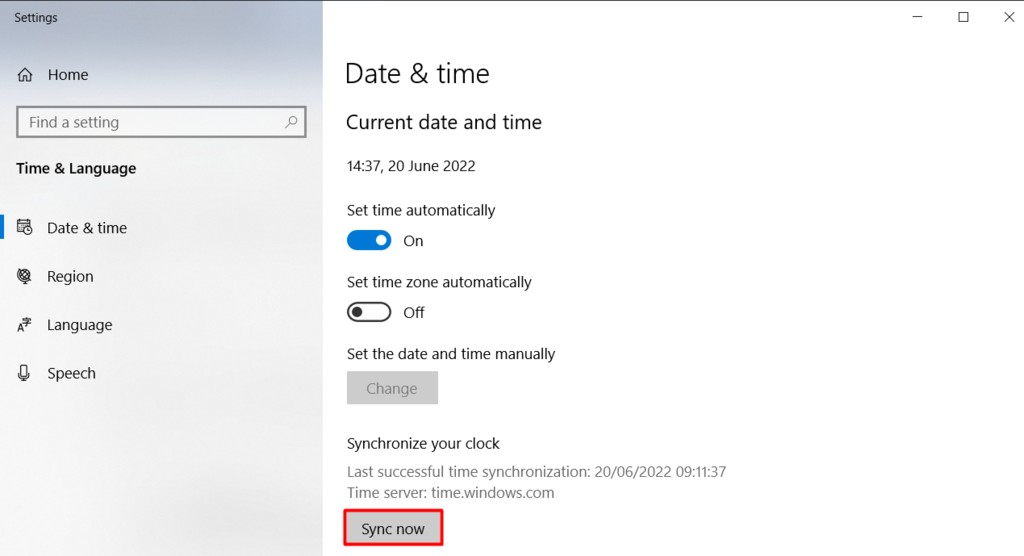
Update Your Browser
Sometimes encountering the NET::ERR_CERT_AUTHORITY_INVALID issue might be brought on by using an outdated browser.
Access Settings -> About Chrome if you use Chrome. If you get a “Chrome is up to date” warning, you already have the most recent version installed.
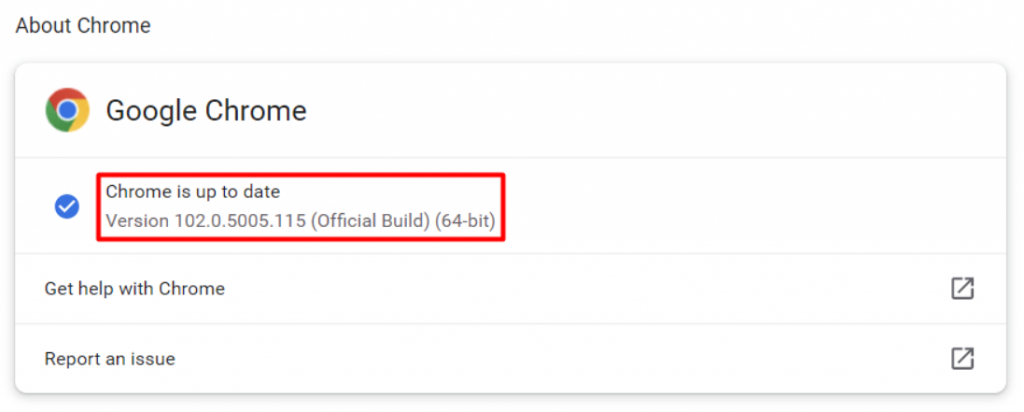
The Update Google Chrome button will appear if your version of Chrome is outdated. Press the button, then wait as it downloads. Click Relaunch after that.
Disable Browser Extensions Temporarily
While extensions improve surfing, they can sometimes result in SSL issues.
Follow these instructions to disable browser extensions in Chrome:
- Select Extensions from More Tools.
- Turn off each Chrome extension individually.
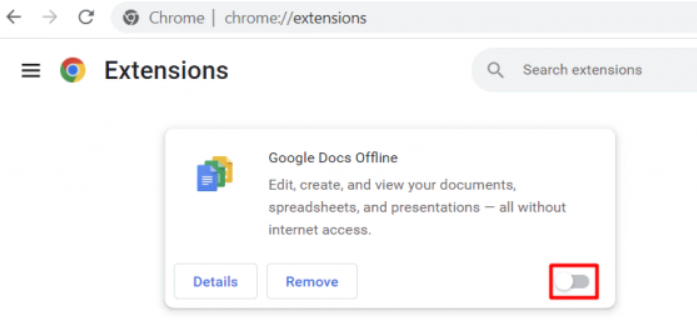
The processes are the same if you’re using Mozilla Firefox or Safari. Find the extensions or add-ons, then make the toggle turn from blue to grey to disable them.
However, Microsoft Edge does not support the deactivate function. The extensions must be removed and then installed again.
Reload the webpage after deactivating the extensions to verify whether the error message still appears. If the website loads perfectly, switch each extension off one at a time to figure out what’s wrong.
Erase Cookies and Cache from the Browser
Cookies and cache can sometimes include outdated or invalid data that result in SSL issues, but they are also helpful in speeding up the loading of online pages in browsers. Try using your browser incognito or private mode to determine if the issue is mainly with the cache.
If a website may be accessed in incognito mode, the browser still holds an outdated cache. Clear your browser’s cache and cookies to fix this.
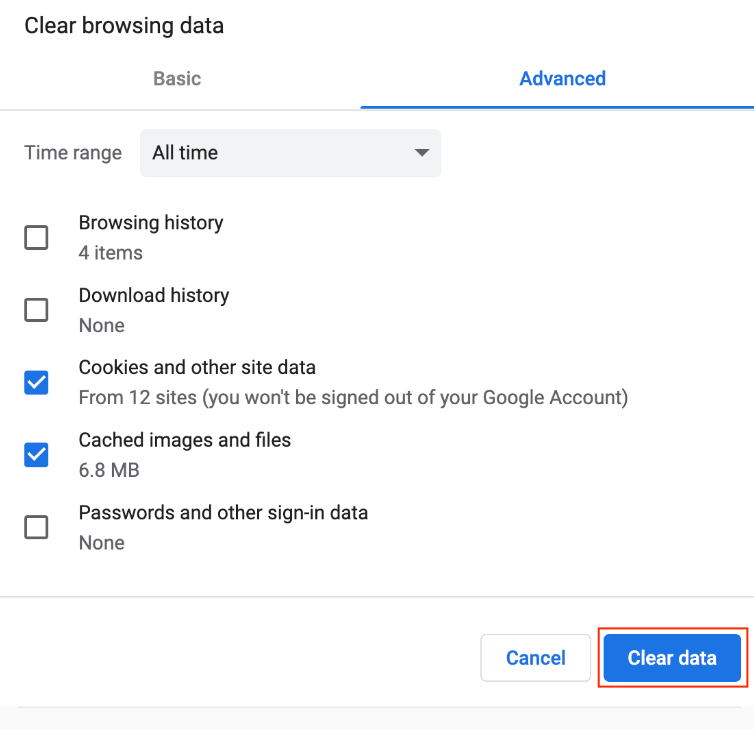
Chrome, Firefox, Safari, Opera, and Edge have almost identical processes for erasing browsing history. Google Chrome:
- Click the menu at the upper right to navigate.
- Select Clear Browsing Data under More Tools.
- Click Clear data after selecting the time range.
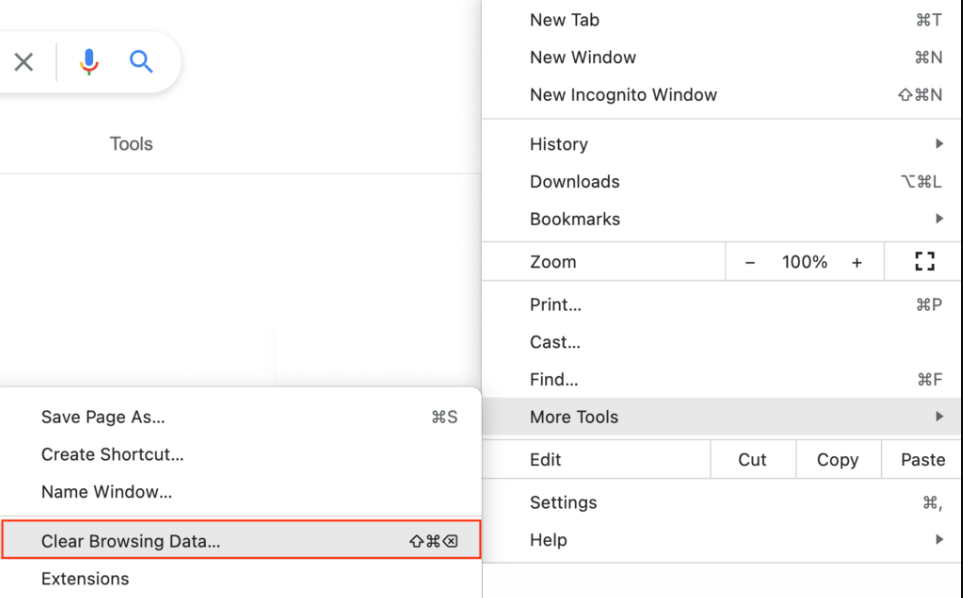
Turn off the Antivirus or Firewall
Try temporarily disabling the firewall or antivirus software as another possibility. To turn off Windows Firewall:
- Click the Start button.
- Search for Control Panel.
- System and Security -> Windows Defender Firewall should be selected.

- On the left, press Turn Windows Defender Firewall on or off.
- Select Disable Windows Defender Firewall in the private and public network settings (not advised).
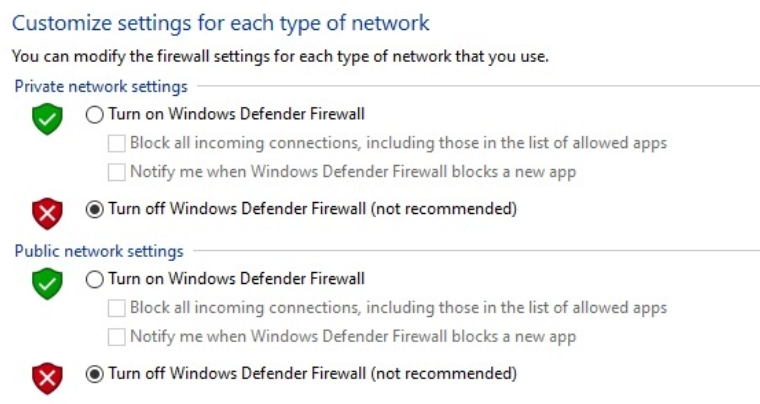
Get a Certificate from an Authorized Authority
Nowadays, there is no excuse for using a self-signed certificate. If price is your primary consideration, you can get trusted certificates from Certera and other reputable CAs.
Website owners may need services that are unavailable from free certificate providers, including organization certification. Customers of Certera can quickly install SSL certificates within Certera’s dashboard after paying for such premium service from a third party.
Carry Out an SSL Server Test
Something could have gone wrong during setup if you had installed your SSL certificate just before the error message started popping up. It may frequently happen if you installed the certificate personally rather than using your web host.
Using an SSL check tool is the most straightforward approach to verify that your certificate has been installed correctly. The use of this specific tool is cost-free.
Input the domain where the mistake appears and press the “Submit” button.
Input the domain where the problem is appearing and click the Submit option.
Allow a few minutes for the results to show up. You should receive an A+ and 100 percent on each of your certifications.
If you fail to get a perfect score, scroll down to the list of certifications the tool displays. There must be a part that indicates whether your certificate is trusted. You must install a certificate from a reliable source in its place if the tool returns a negative outcome.
Update/Renew Your SSL Certificate
For security reasons, many SSL certificates must be renewed periodically. The renewal procedure confirms the legitimacy of your domain; with it, certificates could retain some of their validity.
If the website host does not manage the renewal for you when the term expires, you must do it yourself. However, if you use a different web server, you might not have access to renewal options through your control panel.
Try loading your website again after renewing your SSL certificate to check whether the NET::ERR_CERT_AUTHORITY_INVALID issue still occurs.
Clear the SSL State on your Computer
Your computer stores cached copies of certificates from websites you temporarily visit, so it won’t have to go through the verification procedure each time you access them.
You could think of your SSL state as a certificate-specific cache. When you encounter issues related to incorrect certificate authorities, you may erase your Computer’s SSL state, similarly to how you do with your cache.
To accomplish this in Windows, go to the Control Panel’s Internet Options menu and select the Content tab:

Try refreshing your webpage after clicking the “Clear SSL state.”
The error message NET::CERT_AUTHORITY_INVALID could seem perplexing, but this article will provide you with the skills necessary to handle it in Google Chrome.
Wrap up!
These troubleshooting techniques might help you in resolving the NET::ERR_CERT_AUTHORITY_INVALID Error that you have been experiencing.
Remember to get your SSL certificate from a reputable Certificate Authority. Digital certificate issues sometimes occur because the browser cannot recognize the cert provided by an untrustworthy certificate authority.
If that doesn’t resolve the issue, follow the various tips in this article one at a time.
To protect your data, provide security to your users, and earn their confidence, you must have an SSL certificate. Avoid letting some concerns prevent you from utilizing an SSL. You can fix SSL-related errors if you know how to troubleshoot them.
FAQ’s
The NET Certificate Error—how do I solve it?
A few tips to solve this Error are as follows,
- Change the time and date on your Computer.
- Update Your Browser.
- Clear the cookies and cache in your browser.
- Disable browser extensions temporarily.
- Disable the VPN.
- Disable your antivirus or firewall. Etc.
What is Err_cert_authority_invalid only on Chrome?
When a browser cannot verify a site’s SSL certificate, an error message with NET::ERR_CERT_AUTHORITY_INVALID appears. Using a self-signed SSL certificate is one of the SSL-related mistakes that might cause this invalid code. Although it might be less expensive, a self-signed certificate must be more credible.
How do you Resolve the Incorrect Certificate Error in Firefox and Google Chrome?
- Open Chrome.
- Click the three small dots in the upper-right corner of Chrome to select Settings.
- In the search box, enter “proxy,” then click “Open Proxy Settings.”
- Now, select the Security option and upgrade the security level to Medium-High.
- To save the modification, click Apply and OK.
How can I Turn off My SSL Certificate?
Choose a domain. Go to Edge Certificates under SSL/TLS. Select Disable Universal SSL under the option to disable Universal SSL. Check to see the Acknowledgement’s warnings.
How do I Manually Install an SSL Certificate?
- Purchase an SSL Certificate.
- Set up the SSL Certificate.
- Create and submit a CSR.
- After verifying the certificate’s information, click “Proceed.”
- The certificate’s validation process needs time.

